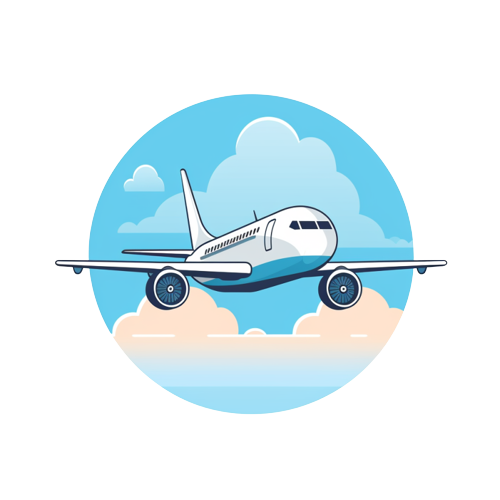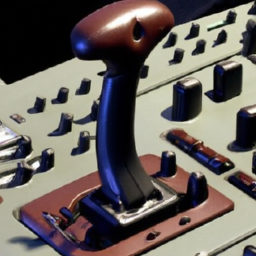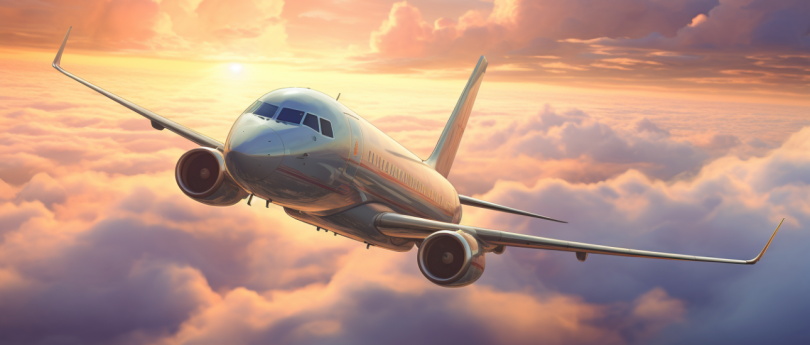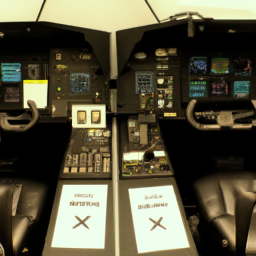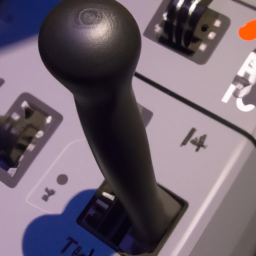Are you interested in creating your own flight simulator at home? In this article, we will guide you through the steps to set up your very own flight simulator right in the comfort of your own home. From choosing the right hardware and software to configuring your system, we will cover everything you need to know to get started. So, if you’re ready to take flight from the comfort of your own home, keep reading to learn how to set up your flight simulator.
1. Finding the Right Equipment
Researching flight simulator options
When it comes to setting up a flight simulator at home, the first step is to research the various options available to you. There are many flight simulator programs on the market, each offering different features and levels of realism. Take the time to read reviews, watch videos, and ask for recommendations to find the simulator that best suits your needs and preferences.
Choosing the right joystick and controls
Once you have chosen a flight simulator program, the next step is to select the appropriate joystick and controls. The joystick is an essential component of a flight simulator as it allows you to control the aircraft’s movements. Look for a joystick that is comfortable to hold, has a wide range of motion, and has programmable buttons for easy customization.
In addition to a joystick, you may also want to consider additional controls such as throttle quadrants, rudder pedals, and trim wheels. These controls will enhance the realism of your flight simulator experience and provide you with a more immersive flying experience.
Deciding on a computer setup
To run a flight simulator at home, you will need a computer with sufficient processing power and graphics capabilities. Check the system requirements of your chosen flight simulator program and ensure that your computer meets or exceeds these requirements.
In general, it is recommended to have a fast processor, ample RAM, and a dedicated graphics card for optimal performance. If you are unsure about the specifications of your computer, consult with a computer specialist who can help you choose the right hardware for your flight simulator setup.
Selecting a high-resolution display
A high-resolution display is crucial for a realistic flight simulator experience. Consider investing in a monitor or a projector with a high resolution and a wide viewing angle. This will allow you to see the fine details of the virtual cockpit and the surrounding scenery.
A large display is also recommended to provide a more immersive experience. Depending on your budget and preferences, you can choose between a single large monitor, a multi-monitor setup, or a virtual reality headset for an even more immersive experience.
2. Setting Up the Hardware
Assembling the flight simulator components
Once you have gathered all the necessary equipment, it’s time to assemble your flight simulator components. Start by setting up your computer in a convenient location where you can comfortably operate the flight controls. Make sure that your computer is positioned on a stable surface and is properly connected to a power source.
Next, assemble your joystick and any additional controls such as throttle quadrants or rudder pedals according to the manufacturer’s instructions. Place them on a table or a dedicated simulator desk, ensuring that they are within easy reach.
Connecting the joystick and controls
Connect your joystick and controls to your computer using the provided cables. Most joysticks simply require a USB connection to establish a connection with the computer. Make sure to plug the cables securely into the appropriate ports to ensure proper functionality.
If you have additional controls such as throttle quadrants or rudder pedals, connect them in a similar manner. Refer to the manufacturer’s instructions for any specific setup steps for these devices.
Configuring the computer and display settings
Once your hardware is set up, it’s time to configure your computer and display settings to optimize your flight simulator experience. Start by updating your graphics card drivers to ensure that you have the latest software updates. This will help improve graphics performance and prevent any compatibility issues.
Next, adjust the display settings on your monitor or projector to achieve the best possible image quality. Calibrate the colors, brightness, and contrast to your liking. Additionally, make sure that the display is set to its native resolution for the sharpest image.
Testing the hardware for proper functionality
Before diving into the flight simulator software, it’s important to test your hardware for proper functionality. Open the control panel or configuration software for your joystick and verify that all buttons and axes are properly recognized. Move the controls in all directions and ensure that the movements are accurately reflected on the screen.
Additionally, open a simple game or test program that allows you to test the functionality of each control individually. This will help you identify any issues and make necessary adjustments before starting your flight simulator software.
3. Installing the Flight Simulator Software
Downloading and installing the flight simulator program
Now that your hardware is set up and tested, it’s time to install the flight simulator program of your choice. Visit the official website of the flight simulator program and download the installer. Follow the on-screen instructions to install the program on your computer.
Setting up user preferences and options
Once the flight simulator program is installed, you will have the opportunity to customize your user preferences and options. Take the time to review the available settings and adjust them according to your preferences. This includes options such as control sensitivity, graphics quality, and audio settings.
Adding additional aircraft and scenery
Most flight simulator programs come with a wide range of default aircraft and scenery options. However, if you want to enhance your flight simulator experience, you can add additional aircraft and scenery packs. These packs are often available for purchase or as free downloads from the flight simulator community.
Updating the software to the latest version
After installing the flight simulator software, it’s important to check for any available updates. Developers often release updates to improve performance, fix bugs, and add new features. Check the official website or the software’s built-in update feature to ensure that you are running the latest version of the flight simulator program.
4. Customizing Your Flight Simulator Experience
Adjusting realism settings and difficulty levels
One of the great advantages of a flight simulator is the ability to customize your experience according to your skill level and preferences. Most flight simulator programs allow you to adjust realism settings such as aircraft systems complexity, weather conditions, and physics accuracy.
If you are new to flight simulators, consider starting with simplified settings and gradually increase the complexity as you become more comfortable. Similarly, if you are an experienced pilot, you may want to increase the realism settings to challenge yourself and simulate real-world conditions.
Creating personalized flight plans
Another way to customize your flight simulator experience is by creating personalized flight plans. Flight simulator programs often include a flight planner tool that allows you to set your departure and destination airports, waypoints, and desired routes.
By creating your own flight plans, you can simulate real-world flights or create challenging scenarios. You can also set specific objectives such as practicing instrument approaches or cross-country navigation.
Installing third-party add-ons and mods
The flight simulation community offers a wide range of third-party add-ons and mods that can enhance your flight simulator experience. These can include additional aircraft models, realistic scenery, improved weather effects, and advanced systems simulations.
Before installing any third-party add-ons or mods, make sure to read reviews, check for compatibility with your flight simulator program, and follow the installation instructions carefully. Adding too many add-ons at once can impact performance, so prioritize the ones that are most important to you.
Configuring weather and time settings
Flight simulator programs allow you to simulate various weather conditions and time settings. Whether you want to fly in clear skies, experience challenging crosswinds, or practice flying at night, you can easily adjust these settings to create the desired environment.
Experiment with different weather conditions and times of day to enhance your flight simulator experience. This will help you develop skills in various weather conditions and become a more versatile pilot.
5. Learning and Practicing
Accessing tutorials and training resources
Flight simulators are a great tool for learning and practicing aviation skills. Many flight simulator programs offer built-in tutorials and training resources that can help you master the basics of flying, navigation, and aircraft systems.
Take advantage of these resources to familiarize yourself with the flight simulator controls, learn essential techniques, and practice procedures. These tutorials will guide you step by step, making the learning process more enjoyable and efficient.
Practicing basic flight maneuvers
Once you have a good grasp of the fundamentals, it’s important to spend time practicing basic flight maneuvers. These can include takeoffs and landings, climbs and descents, turns, and coordination exercises.
Start with simple maneuvers and gradually progress to more complex ones. Set specific goals for each session and track your progress over time. Regular practice will help you build muscle memory and develop a solid foundation of flying skills.
Mastering instrument navigation
Instrument navigation is a crucial skill for every pilot. Flight simulators provide an excellent platform for practicing and mastering this skill. Use the flight simulator’s built-in navigation tools to practice flying using instruments only.
Practice using VOR navigation, ILS approaches, and GPS navigation. Mastering these skills will enhance your situational awareness and enable you to fly more confidently in various weather conditions and complex airspace.
Simulating emergency scenarios
One of the benefits of a flight simulator is the ability to simulate emergency scenarios in a safe and controlled environment. This can include engine failures, systems malfunctions, or emergency landings.
By simulating these scenarios, you can improve your decision-making skills, practice emergency procedures, and develop the ability to remain calm under pressure. Regularly incorporate emergency scenarios into your flight simulator sessions to enhance your preparedness as a pilot.
6. Joining the Flight Simulation Community
Participating in online forums and communities
The flight simulator community is passionate and supportive, and joining online forums and communities can enhance your flight simulator experience. Engage with fellow flight simulation enthusiasts, ask questions, share your experiences, and learn from others.
There are many online forums, social media groups, and websites dedicated to flight simulation. Joining these communities will not only expand your knowledge but also provide a platform for discussing your flight simulator setup, seeking advice, and making new friends.
Finding virtual airlines and multiplayer sessions
Flight simulators offer the option to fly with other virtual pilots in multiplayer sessions. This allows you to join virtual airlines, participate in group flights, and even engage in air traffic control interactions.
Virtual airlines provide a structured environment for pilots to simulate real-world airline operations, including scheduled flights, training programs, and virtual careers. Participating in multiplayer sessions and virtual airlines adds a new level of realism and social interaction to your flight simulator experience.
Attending flight simulation events and conferences
Flight simulation events and conferences are a great way to connect with the flight simulation community and stay up to date with the latest developments in the field. These events often feature demonstrations of new flight simulator technologies, networking opportunities, and educational seminars.
Check online for upcoming flight simulation events and conferences in your area. Attending these events will not only provide you with valuable insights but also give you the opportunity to meet like-minded individuals and share your passion for aviation.
Sharing your experiences and getting feedback
When setting up a flight simulator at home, it can be exciting to share your experiences with others. Whether it’s through online forums, social media, or personal blogs, sharing your flight simulator journey allows you to connect with others who share your passion and exchange knowledge and tips.
By sharing your experiences, you can also receive valuable feedback and suggestions from the flight simulation community. This feedback can help you improve your setup, discover new techniques, and continue growing as a flight simulator enthusiast.
7. Troubleshooting and Maintaining the Setup
Identifying and resolving software glitches
While flight simulators are generally reliable, you may encounter occasional software glitches or bugs. If you experience any issues, start by checking for updates for both your flight simulator program and your computer’s operating system.
Additionally, consult the flight simulator community forums or the official support channels for your flight simulator program for troubleshooting advice. Chances are that someone else has encountered a similar issue and may have a solution.
Troubleshooting hardware connectivity issues
If you encounter connectivity issues with your hardware, such as your joystick not being recognized by the flight simulator program, start by checking all cable connections. Ensure that the cables are securely connected to both the joystick and the computer.
If the issue persists, check the manufacturer’s website for any available driver updates or troubleshooting guides. If necessary, contact the manufacturer’s support team for assistance in resolving the connectivity issue.
Performing regular updates and backups
To ensure the smooth operation of your flight simulator, it’s important to perform regular updates. These updates can include software updates for your flight simulator program, graphics card driver updates, and operating system updates.
Regularly backing up your flight simulator settings, flight plans, and add-ons is also recommended. In the event of a hardware failure or the need to reinstall your flight simulator program, having a backup will save you time and frustration.
Cleaning and maintaining the equipment
Proper cleaning and maintenance of your flight simulator equipment will prolong its lifespan and ensure optimal performance. Regularly clean your joystick, controls, and display using appropriate cleaning solutions and a soft cloth.
Inspect all cables and connectors for any signs of wear or damage. If you notice any issues, promptly replace the damaged cables or connectors to prevent any potential hardware failures.
8. Expanding the Simulator Experience
Connecting additional peripherals like rudder pedals
To further enhance the realism of your flight simulator experience, consider connecting additional peripherals such as rudder pedals. Rudder pedals allow you to control the aircraft’s yaw movement, just like in a real aircraft.
Rudder pedals provide a more realistic flying experience and allow for more precise control during takeoff, landing, and taxiing. They can be purchased separately and are usually compatible with most flight simulator programs.
Creating a dedicated flight simulator space
If you have the space and budget, consider creating a dedicated flight simulator space. This can be a spare room, a corner of a room, or a custom-built cockpit replica. Designate an area where you can set up your flight simulator equipment permanently, allowing you to immerse yourself in the simulation.
A dedicated flight simulator space not only enhances the overall experience but also allows you to keep your equipment organized and ready for use at any time. You can customize the space with additional features such as proper seating, lighting, and sound systems to create a more immersive environment.
Building a cockpit replica for enhanced immersion
For the ultimate flight simulator experience, consider building a cockpit replica. A cockpit replica is a realistic representation of an aircraft’s cockpit, complete with actual aircraft controls and instruments.
Building a cockpit replica requires advanced DIY skills and a significant investment of time and resources. However, the end result is a fully immersive simulator that closely resembles the cockpit of a real aircraft.
Exploring virtual reality integration
Virtual reality (VR) technology has revolutionized the flight simulator industry, providing an unparalleled level of immersion and realism. VR headsets allow you to step into the virtual cockpit and experience flying from a first-person perspective.
If you are interested in exploring VR integration, check the compatibility of your flight simulator program with popular VR headsets. Ensure that your computer meets the recommended hardware specifications for VR and be prepared for the additional cost of purchasing a VR headset.
9. Simulating Real-World Scenarios
Flying in different weather conditions
Flight simulators allow you to simulate flying in a wide range of weather conditions, from clear skies to thunderstorms and fog. Take advantage of this feature to practice flying in various weather scenarios.
Simulating different weather conditions will help you develop skills in handling turbulence, crosswinds, and reduced visibility. It will also enhance your decision-making abilities and prepare you for real-world flying in challenging weather.
Exploring different types of aircraft
Flight simulator programs offer a vast selection of aircraft models, ranging from small propeller-driven planes to large commercial jets. Take the time to explore and fly different types of aircraft to broaden your aviation knowledge and skills.
Each aircraft has its own unique characteristics and flight envelope. Flying different types of aircraft will expand your understanding of aerodynamics, aircraft systems, and operational procedures.
Simulating cross-country flights
Cross-country flights are an essential part of real-world aviation training. They involve planning a flight route, utilizing navigational aids, and flying to different airports.
Simulating cross-country flights in your flight simulator will help you build the necessary skills for navigation, communication with air traffic control, and managing the flight from departure to arrival. Choose different destinations and flight routes to challenge yourself and improve your proficiency.
Recreating famous aviation events
Flight simulators allow you to recreate famous aviation events, such as historic flights or airshow demonstrations. Whether it’s reenacting Charles Lindbergh’s transatlantic flight or performing aerobatic maneuvers at an airshow, these recreations add excitement and historical context to your flight simulator experience.
By recreating famous aviation events, you can learn more about aviation history, gain insight into the challenges faced by pioneering aviators, and appreciate the achievements of the past.
10. Conclusion
Setting up a flight simulator at home provides an immersive and educational experience that allows you to explore the world of aviation from the comfort of your own home. By finding the right equipment, setting up the hardware, installing the flight simulator software, and customizing your experience, you can enjoy a realistic and enjoyable flight simulator experience.
As you navigate through the world of flight simulation, remember to continuously learn and improve your skills. Take advantage of tutorials, practice basic flight maneuvers, and strive to master instrument navigation. Simulate real-world scenarios and join the flight simulation community to connect with fellow enthusiasts and share your experiences.
Remember, the joy of flight simulation lies in the passion for aviation. Enjoy the immersive experience, constantly seek to improve, and let your passion for aviation soar.
